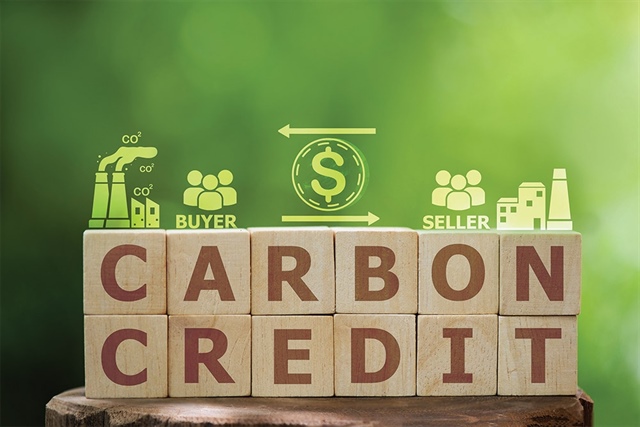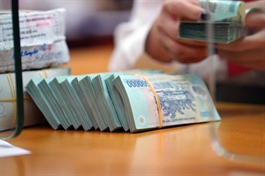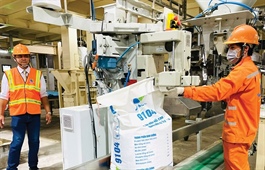Carbon credit interest still at low level
Carbon credit interest still at low level
The carbon credit market is bringing numerous benefits to the wider community, but current business knowledge and interest in this advantageous market has much room to develop.

There are still many foundational barriers preventing a safe and secure carbon credit system, Photo: Shutterstock |
Last month, Lasuco JSC signed a contract with Idemitsu Kosan and Sagri from Japan to implement a carbon emission reduction project involving sugarcane raw material in the north-central province of Thanh Hoa.
The initiative aims to reduce greenhouse gas (GHG) emissions by improving agricultural land management and increasing carbon storage capacity in the soil.
Starting this year, it will enter a testing phase in a 500 hectare area. Lasuco plans to scale up to 8,000ha and commence commercial operations in 2026. The carbon credits generated will be registered under the VM0042 standard of Verra, the world’s largest carbon credit certification organisation.
Le Van Phuong, CEO of Lasuco, stated that cultivating sugarcane with a focus on reducing emissions will bring benefits to both the local community and the business.
“All profits will be paid to farmers, helping them increase sugarcane productivity and significantly improve their economic livelihood. This is how we accompany farmers, creating sustainable and long-lasting value,” Phuong said.
According to data, the amount of carbon Lasuco can obtain when expanding to 8,000ha could reach up to 480,000 tonnes, equivalent to $480,000. This figure is equal to 10 per cent of Lasuco’s profit in 2023 and 40 per cent compared to 2022.
According to the government’s roadmap, Vietnam will pilot the domestic carbon market from now to 2027 and put it into operation in 2028. Therefore, businesses that have early preparations will have a significant advantage when participating in the market.
Dr. Nguyen Tu Anh, director general of the Department of General Economic Affairs at the Central Party Economic Commission, said that developing the carbon market was not only an environmental solution but also a promising opportunity.
“By establishing a mechanism for trading emission rights, the carbon market encourages businesses to invest in efficient green technologies, thereby reducing production costs and enhancing competitiveness. At the same time, the new financial flow generated from trading carbon credits will drive emission reductions, contributing to the transition of the economy towards a lower-carbon model,” he said.
According to the Ministry of Natural Resources and Environment, the global carbon market is experiencing strong growth, reaching an accumulated value of $104 billion in 2023.
The EU Emissions Trading System (ETS) and China are exemplary models, while the US has regional markets such as California. In South Korea, the carbon market has been established since 2015. Meanwhile, Southeast Asian countries such as Thailand, Indonesia, and Malaysia are either planning or already implementing this market.
Nguyen Thanh Cong, deputy head of the Department of Climate Change Economics and Information under the Ministry of Natural Resources and Environment, said that Vietnam has been participating in the carbon market since 2005 through the Clean Development Mechanism.
“Vietnam is currently ranked fourth in the world, with over 250 projects and more than 40 million carbon credits generated from related ventures,” Cong added.
According to the Carbon Market Institute, approximately 73 carbon mechanisms are operating at the national and sub-national levels, including both voluntary and mandatory markets.
Currently, these mechanisms cover around 23 per cent of the total global GHG emissions. For the voluntary carbon market, statistics from the Ecosystem Marketplace programme by Forest Trends show that during 2021-2023, there were 1,530 carbon projects operating in 98 different countries, with a traded carbon volume of approximately 254 million tonnes, amounting to nearly $1.9 billion.
However, Nguyen Hong Loan, director of Advisory and Climate Solutions at the Vietnam Energy and Environmental Consultancy, told VIR that there are still regulatory and institutional barriers.
“One of the major challenges in developing a domestic carbon market in Vietnam is the need for a clear regulatory framework that governs the market, ensures transparency, and prevents fraud. While the current provisions lay a solid foundation, effective implementation will require several key components,” Loan said.
According to Loan, the majority of Vietnamese businesses have little understanding and interest in this advantageous market. Only 30 per cent of businesses currently have a basic understanding of the ETS and the carbon market, with 1.27 per cent clearly understanding how ETS and the carbon market operate. There is also a misunderstanding between ETS and the carbon credit exchange mechanism.
“Issues include the assignment of specific responsibilities and establishment of coordination mechanisms among parties involved in the domestic carbon market, as well as capacity building and resource mobilisation to overcome the administrative complexity of managing emissions allowances and carbon credits,” said Loan.
“Limited infrastructure is also an issue. Vietnam faces significant challenges in developing the infrastructure needed for registering, reporting, and tracking emission allowances and carbon credits, given that infrastructure such as the registry system or the carbon trading platform does not yet exist in the country,” she added.
























